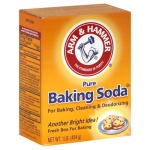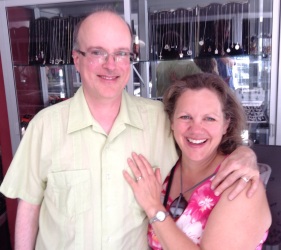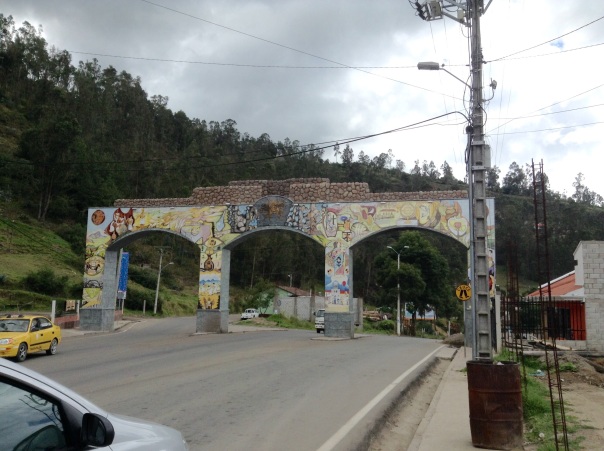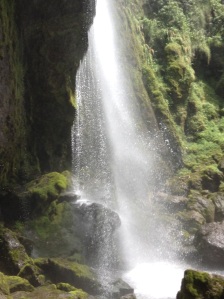or “Cooking in Ecuador”
Like just about everything else that we have experienced in the little more than three months since we moved to Cuenca, cooking is at times an adventure. My cooking style is not fancy but I try to make things taste good. Efficiency is another characteristic of my cooking, I believe, as I try to use what I have and limit the number of shopping trips I need to take to put food on the table each week.
When I lived in Anchorage, I would become really irritated with myself if I had to go to the grocery store more than once per week. Poor planning I would call it. But all that’s changed here in Cuenca!
First of all, we don’t have (nor want) a car so we don’t do anything resembling the “big haul” Costco run shopping anymore. You can read more about where we shop in the post called “Cuenca v. Anchorage” in our archives. Secondly, not everything we are used to buying and using on a regular basis in the States is readily available in Cuenca.
For instance, baking soda is a controlled substance! What? Yep. Apparently it is used in illegal drug production. You can buy it in small quantities from the pharmacy but there are no big orange boxes tucked in the back of our refrigerator absorbing food odors.  Fortunately, there is plenty of baking powder and it can be used perfectly well in most recipes. You need a little more baking powder than baking soda and you have to be careful not to put so much in as to make your recipe taste metallic but, hey, that’s all a part of the adventure!
Fortunately, there is plenty of baking powder and it can be used perfectly well in most recipes. You need a little more baking powder than baking soda and you have to be careful not to put so much in as to make your recipe taste metallic but, hey, that’s all a part of the adventure!

I usually don’t measure ingredients UNLESS I’m baking and then I am dealing with measuring cups and spoons that are not necessarily 1/4, 1/2, 1 cup, etc. And of course, my oven temperature is celcius rather than farenheit. Good thing there are conversion charts online! I manage okay with the measurements and conversions. What’s a little tougher is that my gas oven can either have flame above or flame below – but not both! No worries, though. I just turn the dial from “horno” to “grill” for the last few minutes so that the food gets a little browner on top.

At Christmas, I was very successful in my pirogi (Latvian bacon and onion filled rolls) baking.  Because of the higher elevation, yeast rises more quickly. I countered that by letting my dough rise in the refrigerator. It takes longer but you have more control over when you want to bake. I used a hotter oven (200 C) and for the final browning, I put the pan under my oven in the warming oven. Pretty nifty!
Because of the higher elevation, yeast rises more quickly. I countered that by letting my dough rise in the refrigerator. It takes longer but you have more control over when you want to bake. I used a hotter oven (200 C) and for the final browning, I put the pan under my oven in the warming oven. Pretty nifty!
I’m just bursting to tell you about my most recent cooking adventure! I MADE MOLASSES! If molasses is in some store in Cuenca, I have yet to find it. But truthfully, I haven’t looked very hard. I just figured I wouldn’t make anything that required it. However, I really did miss Molasses Crinkle Cookies. One day, we were having almuerzo (lunch) at one of our favorite places “El Tunel” and for dessert we were served Higo con Melaza. Well, we knew the word higo (figs) but we didn’t know melaza until we tasted it. MOLASSES! With a mixture of English and Spanish, we learned that the all we needed was panela (a brick of brown sugar), water , and heat.
I also found a Youtube video in Spanish of someone demonstrating making melaza out of panela. So I bought a small brick of panela for 41 cents and gave it a go.






Although we both strive to accept new foods, flavors and textures in our adopted home, at times there are just some things we wish were different. Like oatmeal. We all know oatmeal is good for lowering cholesterol levels and we’ve been eating it for years. But we have not been able to make good oatmeal here in Cuenca. Water boils at a lower temperature at our altitude (don’t ask me what that temperature is – look it up if it’s important to you!) So you have to cook oatmeal here for a longer time and it tastes like nothing and sticks together like paste! Glenn still makes and eats it but not Mara. Lots of walking, fresh fruits and vegetables and better living by pharmacy is going to have to do it for her.

We have made some great fruit discoveries while living in Cuenca. Of course, you all know bananas, pineapples and mangos. Those are readily available in the US even though pineapples and mangos are a bit pricey in Alaska even when in season for the rest of the US. In Ecuador, they are grown year round so those are the three musketeers of our fruit basket. By the way, we enjoy the red mangos the most as they are just a little firmer than the yellow and not quite as sweet.
Two new fruits for us are the pitahaya and the cherimoya. They are a bit more expensive and not available at every fruit vendor’s booth but they are worth the price and search. Pitahayas can have green or red skins. The red skinned ones are super pretty but we found the green ones taste sweeter. The inside is white with black edible seeds. To eat a pitahaya , cut it in half and scoop out the pulp with a spoon. The texture of the flesh is similar to a kiwi.


Cherimoyas were described by Mark Twain as “the most delicious fruit known to man.” We tend to agree! They have a lizard skin look to the exterior and like the pitahaya, cutting it in half and scooping and eating the flesh with a spoon works best. The flesh is a creamy white but is chock-full of fairly large but toxic black seeds so you don’t eat them. But it’s really not hard to spit them out into your bowl as you eat the sweet, custardy interior. The flavor is hard to describe but it’s kind of a cross between a banana, pineapple, papaya, peach and strawberry. This fruit is sometimes called a custard apple.


Well, that’s all the time we have for the cooking segment of our blog but how about some pictures of some smaller towns around Cuenca? Back in December, we had the opportunity to travel to the Yungilla Valley, Chordeleg, Sig Sig, and San Bartolome.
The Yungilla Valley is south and a little west of Cuenca and about 3,000 feet lower in elevation so the weather is a warmer and dryer. We spent a beautiful sunny day in the valley with our friends Gary and Sue Gaither and Brenda and Greg Angstrom, highlighted by a nice hike up to El Chorro waterfall near Giron.



Chordeleg, Sig Sig, and San Bartolome are three small towns east and a bit south of Cuenca. What they lack in size they make up for in talented artisans. Chordeleg is known for it’s gold and silver jewelry; Sig Sig for it Ecuadorian hats; and San Bartolome (way up on the side of a mountain) for its guitars.
Photos from Chordeleg


Photos from Sig Sig



Photos from San Bartolome
Here’s a little slide show I made with an app called Magisto. It’s the free version so there are definite limitations but it was pretty fun.
http://magis.to/MCsvUFdPB1A_fjoEDmEwCXh2
What We’ve Learned: That for 3 months we have had incorrect grammar in the title of our blog! Apparently even though we need to use the plural masculine article Los (the) because Gano ends with an ‘o’, we don’t need the ‘s’ at the end (Ganos) like we would in English. So take a look at our new, improved, and corrected banner at the top of the page.
What We Need to Learn: Not to take so long to write a post about a trip. It gets a little difficult to remember all the details!
Don’t forget to comment or ask questions below.
Next post’s topic: You’re guess is as good as mine! But I’m sure I’ll come up with something.




































Love reading your blog about your adventures and the culture. After observing your photo’s of your excursion to San Bartalome, Sig Sig, and Chordeleg I am ready for summer. The blue skies, lush vegetation, and the absence of snow (all though we don’t have much up here in Alaska) are very enticing to say the least. Keep up the good work.
Craig and Penny
LikeLike
Thanks Craig and Penny, We have been having a beautiful summer. The great thing is it just never gets that hot up here at 8,200 ft. All the green trees and flowers are a blessing. You know you can come on down and visit any time you want, except in May when we will be in Anchorage!
LikeLike
I love reading your blog, regardless of the title. I am envious–this is exactly something I would like to do but farthest from Doug’s desires I’m sure. I had the pita hays in Hawaii–I think we call it dragon fruit there. I have not tried the other but sounds delicious. Your cooking photos look delicious! At least you’re attempting to try things and make accommodations. You both look so happy and relaxed and seems like you’re adapting well to a new life and culture.
LikeLike
Thanks for reading, Mary. Maybe Doug wouldn’t want to live here but maybe a visit would be good. Lots of hiking to be done. We are so enjoying living in Cuenca. It feels very RIGHT! Have a great new year.
LikeLike
I had some down time today and read your blog on my laptop. Very relaxing. So happy you are settled and living your dream. You give me hope for the future! I ought to sign up for some conversational Spanish classes at Portland Community College. They are free for me, so why not? I’m up in Federal Way, WA at the moment, for Daniel’s swim meet, the Washington Open. I brought a video camera to film his competitions. Amy and I hired a professional recruiter to help Daniel get the best possible NCAA swim scholarship in 2016. I need to provide the video of his swims though, so I’m here for the whole 3 day weekend. Thanks for keeping me entertained with your blog posts! Its too bad about the Oatmeal though, I really like Old Fashioned Steel Cut Oats, especially with brown sugar. Is there any other substitute for a local breakfast cereal that you could try?
LikeLike
Thanks for reading, Joel! I do believe I saw steel cut oats in the supermarket but they are really expensive because they are imported. When we come back from the States in May, I will bring some steel cut oats but I’m still not sure how they will cook up because it takes them so long at this altitude. Speaking of going to the States, we will be in the Pacific Northwest at the end of April, including Portland. I do hope that we can get together. My best to Amy and Daniel. Good luck with Daniel’s recruiting.
LikeLike
I enjoy all the beautiful photos you post and all the “teachings” about the culture in Cuenca. The fruit looks interesting! What an adventure and wonderful new path you are taking in life.
LikeLike
Thanks Karen. We are loving living here. Hope all is well with you.
LikeLike
Hey, guys, I look forward to each of your posts. Its like getting a guided tour – love it!
LikeLike
Thanks so much, Ed. We’re glad you’re reading the blog. We will be back in Anchorage for a short visit in May. Looking forward to seeing you then.
LikeLike